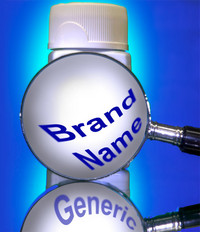
A retrospective analysis of data in Italy has shown that patients taking generic and brand-name alendronate showed the same rates of persistence and compliance [1].
Alendronate is used to treat osteoporosis (a condition in which the bones become thin, weak and break easily) and to prevent osteoporosis in postmenopausal women.
A retrospective analysis was carried out using data collected from the administrative databases of five Local Healthcare Units (Aziende Sanitarie Locali) from the Lombardy region in Italy. The analysis compared differences in persistence and compliance between generic alendronate (ATC – M05BA04) and brand-name alendronate (Fosamax) in clinical practice.
The sample included 20,711 patients from the provinces of Bergamo, Lecco, Milan and Pavia. Patients were included if they had received at least one prescription of alendronate (generic or brand-name) between January 2008 and December 2008. Patients were observed for a period of 34 months starting from the date of the first drug prescription (index date).
Patients were excluded if they had received systemic corticosteroid in the two months prior to the index date (in order to exclude patients with corticosteroid induced osteoporosis), sporadic patients (patients that had only one prescription for alendronate) and patients who had received both generic and brand-name alendronate during the study period.
Persistence was calculated as a continuous variable, in terms of the number of therapy days for which the therapy was available, without interruption. The total number of therapy days was analysed by means of the Defined Daily Dose (DDD). Compliance to therapy was calculated by means of the Medical Possession Ratio (MPR). The MPR was defined as the ratio between the number of packs in the period of persistence multiplied by the number of DDDs per pack, divided by the total days until change of therapy (i.e. persistence).
The number of days that patients were persistent was on average 316 days for the brand-name group compared to 362 days for the generics group. Interestingly, patients had a better persistence (not statistically significant) when using generic alendronate (about 46 days). Patients’ compliance was on average 0.70 for the brand-name group compared to 0.72 for the generics group (not statistically significant). Overall, the results showed that 70% of patients were adherent to therapy with alendronate, whether it be a generic or brand-name drug, during the persistence period.
The price difference between off-patent brand-name drugs and generics in Italy is paid by patients, which can often reduce adherence to therapy. The authors therefore concluded that generics ‘can bring about an increased efficiency in health systems and increase the percentage of population benefitting from a medical care plan’.
Conflict of interest
The authors of the research paper [1]reported no conflicts of interest that were directly relevant to the content of this study.
Editor’s comment
Readers interested to learn more about generics pricing and reimbursement policies in Europe are invited to visitwww.gabi-journal.net to view the following manuscript published in GaBI Journal:
If you are interested in contributing a research paper in a similar area to the GaBI Journal, please send us your submission here.
Related articles
Italy to scrap tender system to boost generic volumes
Reference
1. Colombo GL, Montecucco CM. Generic vs brand originator alendronate: analysis of persistence and compliance in five Local Healthcare Units in the Lombardy Region of Italy. Clin Cases Miner Bone Metab. 2013;10(3):195-8.
Source: www.gabionline.net

